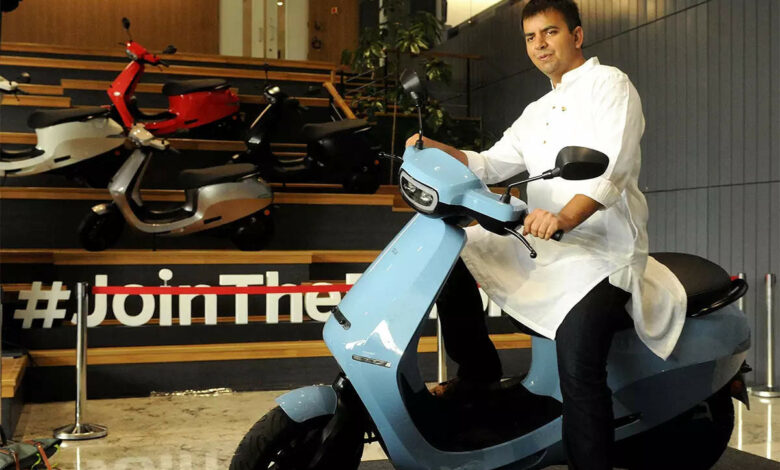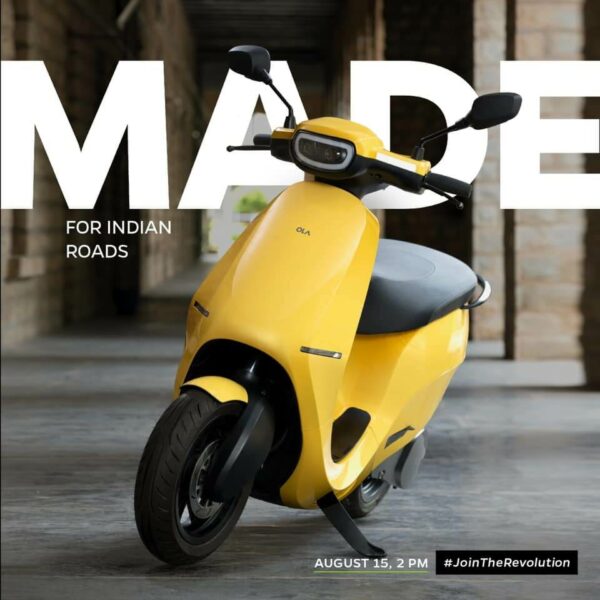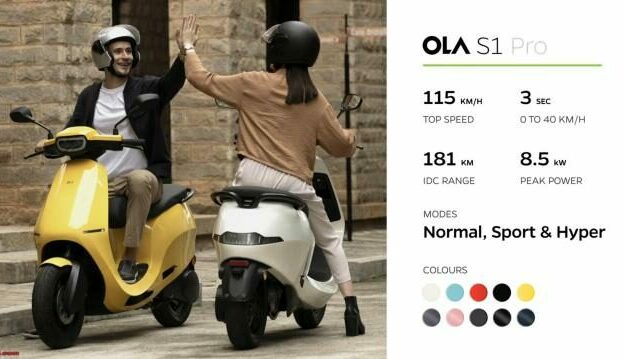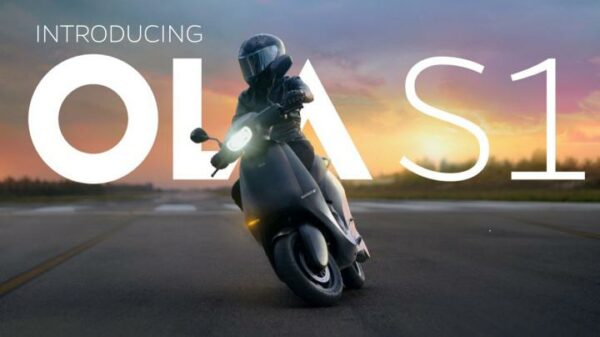
Ola will begin distributing the S1 and S1 Pro electric scooters on December 15.
Ola is India’s most popular mobility platform and one of the best in the world ride-hailing companies, with operations in more than 250 locations across India, Australia, New Zealand, and the United Kingdom. It connects users with drivers and various vehicles, including motorbikes, auto-rickshaws, metered taxis, and cabs, providing hundreds of millions of clients and over 1.5 million driver-partners benefit from convenience and transparency.
Ola’s primary mobility product in India is complemented by its electric-vehicle subsidiary, Ola Electric; India’s largest fleet management company, Ola Fleet Technologies; and Ola Skilling, which seeks to provide millions of job opportunities for India’s youth. Ola is trying to establish mobility for the next billion Indians by acquiring Ridlr, India’s most extensive public transit app, and investment in Vogo, a dockless scooter sharing solution. Ola also provides consumer services such as microinsurance and credit-based payments through Ola Financial Services and a variety of owned culinary brands through India’s largest network of kitchens.
Bhavish Aggarwal and Ankit Bhati established Ola in December 2010, intending to provide transportation to a billion people.
Ola Electric Mobility is a Bangalore-based electric two-wheeler manufacturer in India. The company’s manufacturing unit is located in Krishnagiri, Tamil Nadu, India.

History- 2017-2019:-
Ola Cabs’ parent company, ANI Technologies, founded Ola Electric in 2017 as a wholly-owned subsidiary. A pilot programme was initiated in Nagpur in May 2017 by putting up charging stations across the city and buying electric cabs, e-buses, and e-rickshaws from OEM partners, to reduce emissions and fuel reliance of Ola’s cab fleet and shift to mass electric mobility. It declared in April 2018 that by 2022, it plans to have 1 million electrified vehicles in its fleet.
Bhavish Aggarwal, the company’s founder, bought a 92.5 per cent stake in Ola Electric between December 2018 and January 2019 from ANI Technologies for 1 lakh (US$1,300) and spun it off as a separate company. ANI Technologies retained a 7.5 per cent share in Ola Electric in exchange for the right to utilise the “Ola” brand name.
Ola Electric raised US$56 million in February 2019 from Tiger Global and Matrix India. On May 6, 2019, Ola Electric reported that Ratan Tata had invested an unknown amount in the company as part of its Series A fundraising round. In July 2019, it raised $250 million from SoftBank in a Series B round of funding, valuing the company at over $1 billion.

2020-present
Ola Electric said in May 2020 that it has bought Amsterdam-based electric scooter company Etergo and that it will launch its brand of electric scooters in India by 2021.
After signing an agreement with the Tamil Nadu government in December 2020, the business revealed its plan to build an electric scooter manufacturing unit in Tamil Nadu at the cost of 2,400 crores (US$320 million).
In January 2021, it purchased a 500-acre plot of land in Pochampalli, Krishnagiri District, and development on the factory began in late February.
In the first month of availability, Ola Electric got 500,000 scooter bookings.
Production-
The plant, sprawled over 500 acres and fully automated, is located in Pochampalli town in Tamil Nadu’s Krishnagiri district. The business claims it would be the world’s largest two-wheeler factory, with an annual production capacity of 10 million units. On August 15, 2021, the Ola FutureFactory manufactured the world’s first electric two-wheeler.
The factory produces two versions, the S1 and S1 Pro, which come in ten colours and are expected to start shipping to pre-ordered consumers by October 2021.
Ola Electric’s co-founder and CEO, Bhavish Aggarwal, announced that deliveries would begin on December 15. Ola Electric has also increased its output. It was also stated in the tweet, and Bhavish also uploaded photos of the Ola Scooters awaiting delivery.
Scooter deliveries were initially scheduled to begin in October or November. The delivery was, however, delayed due to the global chip scarcity. They announced a delivery window of 15 to December 31 at the time. Bhavish, on the other hand, has now verified that deliveries would begin on the 15th of this month. No consumer has been able to take delivery of an Ola Electric scooter as of yet.
Ola has also begun offering test rides to those who paid Rs 499 to book a scooter. By December 15, they hope to have started test rides in 1000 cities. When test rides are available in their towns, Ola will notify customers directly. They would have to pay Rs—20,000 to book the scooter and the remaining amount when they deliver.
The booking window for Ola has also been pushed back. Initially, the booking window would have opened on November 1, but it was moved to December 16. However, the purchasing window will now open in January 2022, and the manufacturer has not verified the exact date.

What caused the scooter to be late?
A semiconductor shortage caused the delay. Ola isn’t the only company dealing with this problem. The problem is that every automotive manufacturer is dealing with, and as a result, waiting times are increasing. Automobile manufacturers are changing their variation lineups and looking for additional ways to combat this.
Ola’s electric scooter, which has many modern features, also uses a lot of transistors. A touchscreen, cruise control, connected technologies, and much more are available.
Furthermore, Ola is experiencing difficulties because of a lithium-ion battery scarcity. The problem that every electric vehicle manufacturer is dealing with. The demand for lithium-ion batteries has risen, but providers cannot meet it since lithium is in short supply. Ola’s batteries are now imported from Korea. Ola Scooters are electric scooters.

Ola has two electric scooters in its fleet right now. There are two types of S1: S1 and S1 Pro. Both are based on the electric scooter from Etergo BV. The S1 Pro includes more features, has a more extended riding range, and is more powerful. The S1 costs 99,999 rupees, while the S1 Pro costs 1,29,999 rupees.
Ola does not follow the typical sales model followed by any automotive manufacturer. Instead of going to a dealership, the buyer will book the scooter online and deliver it to their home. Customers will be able to participate in test rides at experience centres. There will be no service centres; instead, the customer will schedule a service appointment, and a technician will visit the customer’s home to service the scooter.
Ola does not follow the typical sales model followed by any automotive manufacturer. Instead of going to a dealership, the buyer will book the scooter online and deliver it to their home. Customers will be able to participate in test rides at experience centres. There will be no service centres; instead, customers will schedule a service appointment, and a technician will come to their home to service the scooter.




